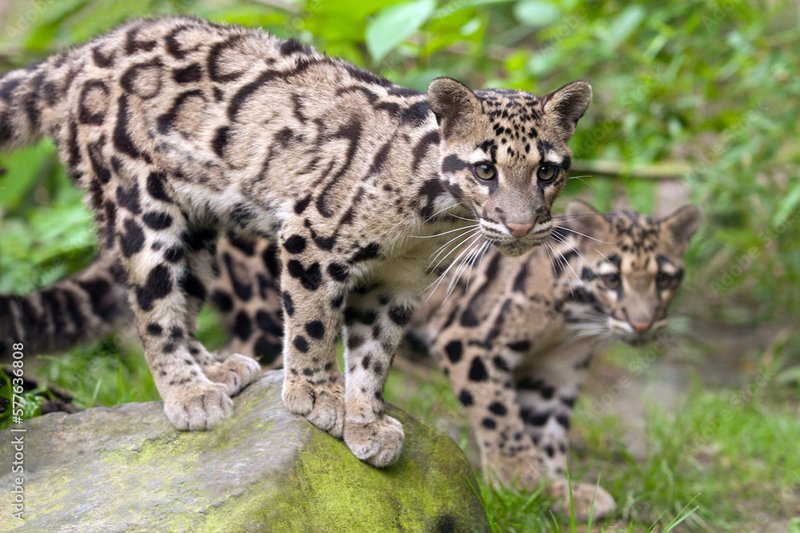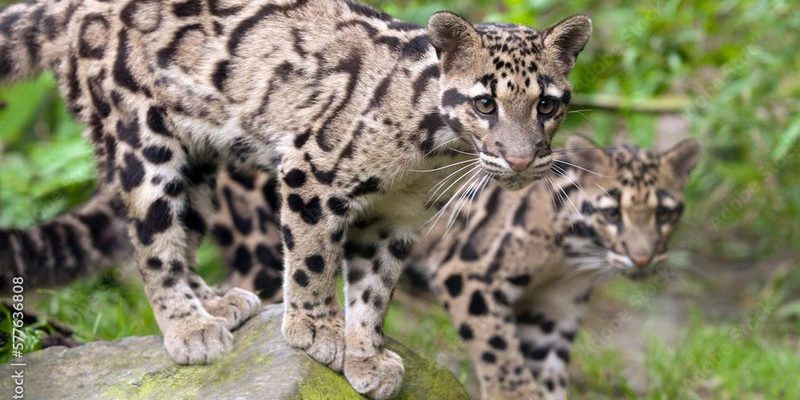
Clouded leopards, with their beautiful, cloud-like spots, can often be found lounging in the treetops, but their nurturing skills are just as impressive as their climbing abilities. They are solitary animals, and motherhood is a crucial part of their life cycle. Let’s dive into how clouded leopards manage to raise their young, from the initial stages of pregnancy to the point when the cubs are ready to venture out on their own.
The Pregnancy Journey
Clouded leopards have a pregnancy that lasts about 93 to 110 days, which is quite typical for big cats. During this time, the mother will start preparing a safe haven in the trees. Here’s the thing: the choice of location is vital. These felines tend to select a secluded den, often hidden in tree hollows or dense foliage. This helps keep their cubs safe from predators while they’re still vulnerable.
Once she’s settled in, the mother will give birth to a litter of one to five cubs, but usually, it’s about two or three. Newborn cubs are tiny—only weighing around 300 grams (about two-thirds of a pound)! It’s hard to imagine that these little furballs will grow into such magnificent creatures. Initially, they are born blind and reliant on their mother’s care. This stage is all about survival, and the mother clouded leopard plays a critical role.
During the early weeks, she’ll keep the cubs hidden, only emerging to nurse or move them to a new location when necessary. This protective instinct is vital as it ensures that her young stay out of harm’s way while they’re still so dependent.
Mother’s Care and Feeding
Once the cubs are a few weeks old, their mother’s care becomes even more intricate. She not only nurses them but also begins to teach them essential life skills. You might be wondering how a mother cat goes about doing this. Well, first off, she’ll bring food back to the den.
Clouded leopards primarily hunt small to medium-sized prey, like birds, monkeys, and squirrels. Watching their mother manage her meals provides the cubs with vital lessons in hunting, even if they’re too young to join in just yet. She generally eats first and then offers leftovers to her cubs, ensuring they get enough nutrition while also teaching them how to scavenge.
Interestingly, these cubs start to play fight with each other soon after they open their eyes. It’s a way for them to strengthen their muscles and develop the necessary skills for hunting. Those playful tumbles and pounces are not just cute; they’re essential training for when they’re older!
Exploring the Environment
As the cubs grow and reach around three months old, their curiosity begins to bloom. They start to explore their surroundings under the watchful eye of their mother. This is a pivotal moment because exploration helps them learn about their habitat. Honestly, it’s quite a sight—those fluffy little cubs climbing trees, investigating unusual sounds, and even practicing their stealth.
During this time, the mother will often bring them to different spots in the forest, teaching them how to navigate their territory. Here’s a fascinating fact: clouded leopards are excellent climbers, and they teach their cubs to climb long before they start hunting on their own. It’s a skill that will serve them well later in life, allowing them to escape danger and chase prey.
These adventures aren’t just about play; they’re essential for the cubs’ development. They learn to recognize scents, identify potential threats, and understand the dynamics of their ecosystem. This connection with their environment shapes them into the skilled hunters they’ll need to be.
Independence and Leaving the Nest
By the time clouded leopard cubs are about six months old, they’re gearing up for one of the most significant transitions in their lives—independence. This is where the mother begins to pull back her care. You’ll notice that she starts hunting more and bringing home food less frequently for her cubs. It’s like she’s nudging them to take that leap into adulthood.
While the cubs are still young, they’ll often stick together, honing their skills in the safety of their treetop home. You might think of this as a ‘practice run’ for the real world. They will tag along on hunts, trying to catch smaller prey, and even mimicking their mother’s movements. It all seems like a natural progression toward independence, doesn’t it?
Eventually, around 18 months of age, the cubs are generally ready to venture out on their own. Before they leave, the mother will make sure they’ve learned everything they need to survive. This is a bittersweet moment; she’s nurturing and protective but also knows her role is to prepare them for life outside the nest.
Challenges in the Wild
Despite all the skills a mother clouded leopard imparts to her young, life in the wild comes with its own set of challenges. One major concern is habitat loss due to deforestation. As jungles shrink, it becomes harder for these leopards to find enough prey and safe spaces for their cubs.
Additionally, the threat of poaching looms large. Clouded leopards are often hunted for their beautiful fur, which can impact their populations and the survival of cubs. This means that raising young in such an environment requires not just maternal care, but also adaptability to changing conditions.
You might wonder how these challenges affect the cubs. With reduced resources, mothers may struggle to provide enough food, or they might need to travel farther to find it. This can lead to increased risks for the cubs, as they might not yet have the skills needed to avoid dangers while hunting or exploring.
Conservation Efforts
Recognizing the challenges faced by clouded leopards, conservation efforts are underway to help protect both the animals and their habitats. Protected areas have been established to provide safe havens for these leopards and their young. Organizations are working to raise awareness about the importance of preserving forests and the species that inhabit them.
Efforts like wildlife corridors—areas that connect separated habitats—help allow cubed leopards to find mates and food without crossing dangerous roads or other human-made obstacles. Here’s the thing: supporting these initiatives is essential not just for clouded leopards, but for the entire ecosystem they help maintain.
By understanding how clouded leopards raise their young and the challenges they face, we can become more engaged in their protection. It’s not just about saving a species; it’s about preserving the rich tapestry of life in the jungles they call home.
In conclusion, raising young in the wild is a delicate balance of nurturing, teaching, and eventually letting go. Clouded leopards are remarkable mothers, and the skills they impart ensure the survival of their species amid challenging circumstances. By supporting conservation efforts, we can help secure a future where clouded leopards thrive in their natural habitats, ensuring that their young have a fighting chance in this ever-changing world.

